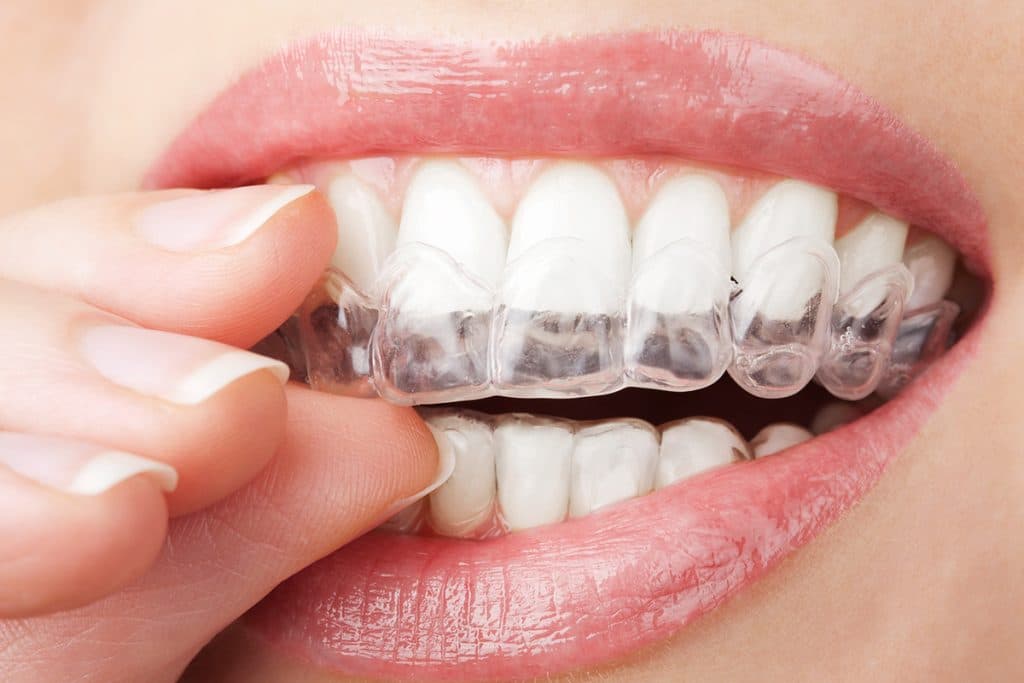Can Invisalign Fix My Specific Dental Issue?

Invisalign® is a highly versatile orthodontic system that can do much more than straighten teeth. It can also correct multiple more severe issues, including overbite, underbite, crossbite, crowding and spacing.
Orthodontic Issues Corrected by Invisalign
Invisalign is completely customized for each patient, meaning that it can adapt to a varied range of orthodontic conditions:
Crooked Teeth
One of Invisalign's most common uses is correcting crooked teeth. Invisalign is a viable solution for patients with misaligned teeth, gradually creating an even, symmetrical smile.
Crowded Teeth
Crowded teeth are an aesthetic issue but can also impact oral health because they are harder to clean. This can lead to calculus buildup, gingivitis, bone loss, and excess cavities. Fortunately, Invisalign works well to correct tooth crowding.
Gaps Between Teeth
Invisalign can quickly correct mild to moderate tooth gaps.
Bite Problems
Using tooth-colored composite "buttons" and, in rare cases, elastic bands, Invisalign can realign the teeth and change your dental bite. The button attachments are discreet and smooth to the touch. The location of the buttons and orientation of the elastic bands change depending on the desired bite alteration.
- Overbite: An overbite happens when the front teeth protrude past the bottom teeth.
- Underbite: This condition means the lower teeth protrude past the upper teeth.
- Crossbite: The patient has a crossbite when the jaws do not meet evenly from side to side.
- Open Bite: Dentists diagnose an open bite if the teeth do not entirely meet.
Advantages of Invisalign
Comfortable
Medical-grade plastic aligners are smooth to the touch and will not irritate tender oral tissues. You will hardly notice them after you become accustomed to wearing the trays.
Discreet
Teen and adult patients quickly grow weary of the comments they receive when they have braces. Invisalign allows you to keep your orthodontic work to yourself, though observant friends may notice your smile changes.
Better Oral Health
Invisalign patients enjoy better gum health than braces patients due to the ease of removal and cleaning. Improved oral hygiene routine during Invisalign treatment leads to better outcomes without experience red, swollen gums, possible cavities, and white spots traditionally associated with metal braces
Faster than Braces
The average treatment time with Invisalign is 12 to 18 months, compared to 18 months to three years for standard metal braces.
Ensuring the Best Results from Invisalign
Wear your aligners at least 20 to 22 hours daily, removing them only to drink, eat, and practice oral hygiene. Brush your teeth and clean your aligners twice daily. Pay close attention to flossing.
Be careful with staining foods and drinks while using Invisalign. If you cannot brush, rinse your mouth well after meals before replacing your aligners.
Frequently Asked Questions About Invisalign
Are there any conditions that Invisalign cannot correct?
Most patients can successfully receive Invisalign, but standard braces may be needed to correct more severe bite and alignment issues. For example, impacted canines, jaw formation issues, and severe crossbites may be too complex for Invisalign.
Do I have to wear a retainer after Invisalign?
A retainer is essential after completion of any orthodontic treatment. It prevents your teeth from slipping back to their original position and protects your investment in straighter teeth.
Contact Rush Family Dental
If Invisalign treatment appeals to you, please contact us at one of our convenient Phoenix-area locations today. Our dentists would gladly meet you and explain how Invisalign can create a well-aligned smile.
